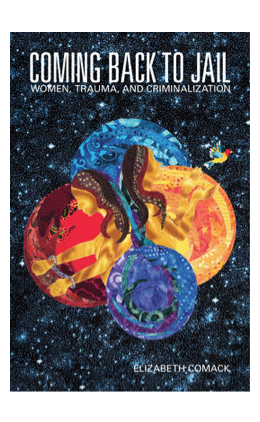
Coming Back to Jail: Women, Trauma, and Criminalization by Elizabeth Comack
Published some two decades ago, Elizabeth Comack’s Women in Trouble explored the connections between the women’s abuse histories and their law violations as well as their experience of imprisonment in an aged facility. What has changed for incarcerated women in those twenty years? Are experiences of abuse continuing to have an impact on the lives of criminalized women? How do women find the experience of imprisonment in a new facility?
Drawing on the stories of forty-two incarcerated women, Coming Back to Jail broadens the focus to examine the role of trauma in the women’s lives. Resisting the popular move to understand trauma in psychiatric terms — as post-traumatic stress disorder (PTSD) — the book frames trauma as “lived experience” and locates the women’s lives within the context of a settler-colonial, capitalist, patriarchal society. Doing so enables a better appreciation of the social conditions that produce trauma and the problems, conflicts and dilemmas that bring women into the criminal justice net.
In Coming Back to Jail, Comack shows how — despite recent moves to be more “gender responsive” — the prisoning of women is ultimately more punishing than empowering. What is more, because the sources of the women’s trauma reside in the systemic processes that have contoured their lives and their communities, true healing will require changing women’s social circumstances on the outside so they no longer keep coming back to jail.
Purchase at Fernwood Publishing
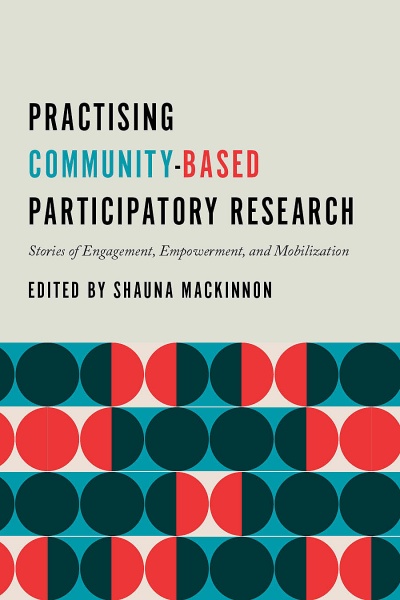
Practising Community-Based Participatory Research: Stories of Engagement, Empowerment, and Mobilization edited by Shauna MacKinnon
There is increasing pressure on university scholars to reach beyond the “ivory tower” and engage in collaborative research with communities. But what does this actually mean? What is community-based participatory research (CBPR) and what does engagement look like?
This book presents stories about CBPR from past and current Manitoba Research Alliance projects in socially and economically marginalized communities. Bringing together experienced researchers with new scholars and community practitioners, the stories describe the impetus for the research projects, how they came to be implemented, and how CBPR is still being used to effect change within the community.
The projects, ranging from engagement in public policy advocacy to learning from Elders in First Nations communities, were selected to demonstrate the breadth of experiences of those involved and the many different methods used. The issues they address are applicable to urban centres and rural and Indigenous communities throughout North America and beyond. By providing space for researchers and their collaborators to share the stories behind their research, this book offers valuable lessons and rich insights into the power and practice of CBPR.
Written in an accessible style, this book is a practical resource for students, scholars, and practitioners interested in community-based research; university-level teachers of social sciences research methods courses; and social justice advocates who want to learn more about how research can be used as a policy advocacy tool.
Purchase at UBC Press
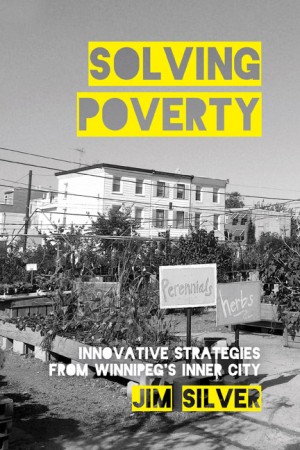
Solving Poverty: Innovative Strategies from Winnipeg’s Inner City by Jim Silver
In Solving Poverty, Jim Silver, a veteran scholar actively engaged in anti-poverty efforts in Winnipeg’s inner city for decades, offers an on-the-ground analysis of this form of poverty. Silver focuses particularly on the urban Aboriginal experience, and describes a variety of creative and effective urban Aboriginal community development initiatives, as well as other anti-poverty initiatives that have been successful in Winnipeg’s inner city. In the concluding chapter Silver offers a comprehensive, pan-Canadian strategy to dramatically reduce the incidence of urban poverty in Canada.
Purchase at Fernwood Publishing
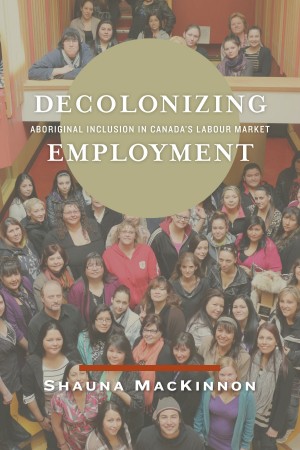
Decolonizing Employment: Aboriginal Inclusion in Canada’s Labour Market by Shauna MacKinnon
Indigenous North Americans continue to be overrepresented among those who are poor, unemployed, and with low levels of education. This has long been an issue of concern for Indigenous people and their allies and is now drawing the attention of government, business leaders, and others who know that this fast-growing population is a critical source of future labour. Shauna MacKinnon’s Decolonizing Employment: Aboriginal Inclusion in Canada’s Labour Market is a case study with lessons applicable to communities throughout North America. Her examination of Aboriginal labour market participation outlines the deeply damaging, intergenerational effects of colonial policies and describes how a neoliberal political economy serves to further exclude Indigenous North Americans.
MacKinnon’s work demonstrates that a fundamental shift in policy is required. Long-term financial support for comprehensive, holistic education and training programs that integrate cultural reclamation and small supportive learning environments is needed if we are to improve social and economic outcomes and support the spiritual and emotional healing that Aboriginal learners tell us is of primary importance.
Purchase at University of Manitoba Press
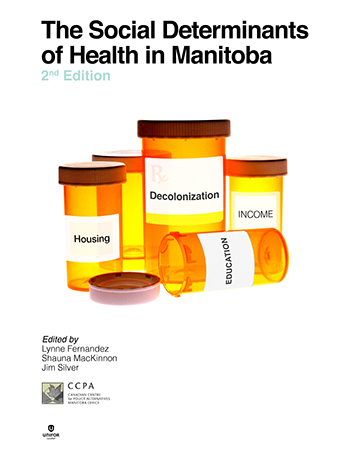
Social Determinants of Health in Manitoba, 2nd Edition edited by Lynne Fernandez, Shauna MacKinnon and Jim Silver
“This 2nd Edition of the Social Determinants of Health in Manitoba is a timely reminder that the health of people is determined more by economic and social inequality than by germs and diseases. In keeping with the 1st Edition, this is an excellent collection of papers by experts in the field.” — John Loxley, Professor of Economics, University of Manitoba
This book examines the social and economic conditions that contribute to health inequities in our province, and aims to make the social determinants of health approach better known to Manitobans. The book looks at a range of social determinants, examines their status in Manitoba, and considers the kinds of policies that could be implemented to improve health outcomes.
Purchase at Canadian Centre for Policy Alternatives

Poor Housing: A Silent Crisis edited by Josh Brandon and Jim Silver
Across Canada, there is a severe shortage of decent quality housing that is affordable to those with low incomes, and much of the housing that is available is inadequate, even appalling. The poor condition of housing for those below the poverty line adds to the weight of the complex poverty they already endure, which includes worsening health, adversely affected education and neighbourhoods that are more prone to crime and violence. Using Winnipeg, Manitoba, as an example, Poor Housing examines the real-life circumstances of low-income people who are forced to live in these conditions. Contributing authors examine some of the challenges faced by low-income people in poor housing, including difficulties with landlords who abuse their power, bedbugs, racism and discrimination and a wide range of other social and psychological effects. Other selections consider the particular housing problems faced by Aboriginal people and by newcomers to Winnipeg as well as the challenges faced by individuals living in rooming houses. Finally, the authors describe a number of creative and successful housing strategies for low-income people in Winnipeg, including Aboriginal housing co-ops, a revitalized 1960s-style public housing complex and a highly creative repurposing of an inner-city church into supported social housing. In these successful cases, communities and governments have worked cooperatively to good effect.
Purchase at Fernwood Publishing
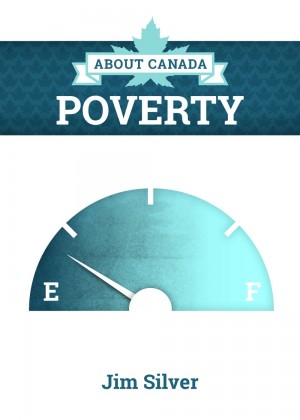
About Canada: Poverty by Jim Silver
For a country as wealthy as Canada, poverty is utterly unnecessary. In About Canada: Poverty, Jim Silver illustrates that poverty is about more than a shortage of money: it is complex and multifaceted and can profoundly damage the human spirit. At the centre of this analysis are Canada’s neoliberal economic policies, which have created conditions that make a growing number of people vulnerable to low income, vanishing public services and poor physical health. Silver also highlights the ways in which poverty is intimately connected to colonialism and racial and gender discrimination, and finds that the political and economic policies enacted by the Canadian government serve only a powerful minority, while producing a range of negative outcomes for the rest of us, especially the poor. Silver points out that the costs of poverty — relating to health care, crime, education and unemployment — are higher than the costs of solving poverty, and he lays out an achievable strategy for its dramatic reduction in Canada. When poverty is understood as resulting from political choices, its elimination requires putting pressure on governments to ensure that different choices are made.
Purchase at Fernwood Publishing
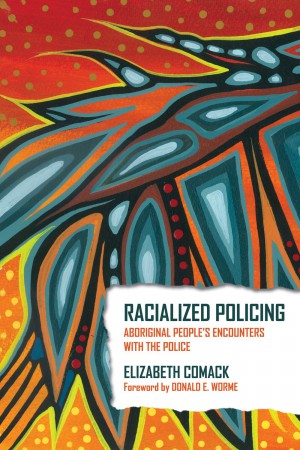
Racialized Policing: Aboriginal People’s Encounters with the Police by Elizabeth Comack
Policing is a controversial subject, generating considerable debate. One issue of concern has been “racial profiling” by police, that is, the alleged practice of targeting individuals and groups on the basis of “race.” Racialized Policing argues that the debate has been limited by its individualized frame. As well, the concentration on police relations with people of colour means that Aboriginal people’s encounters with police receive far less scrutiny. Going beyond the interpersonal level and broadening our gaze to explore how race and racism play out in institutional practices and systemic processes, this book exposes the ways in which policing is racialized.
Situating the police in their role as “reproducers of order,” Elizabeth Comack draws on the historical record and contemporary cases of Aboriginal-police relations – the shooting of J.J. Harper by a Winnipeg police officer in 1988, the “Starlight Tours” in Saskatoon, and the shooting of Matthew Dumas by a Winnipeg police officer in 2005 – as well as interviews conducted with Aboriginal people in Winnipeg’s inner-city communities to explore how race and racism inform the routine practices of police officers and define the cultural frames of reference that officers adopt in their encounters with Aboriginal people. In short, having defined Aboriginal people as “troublesome,” police respond with troublesome practices of their own. Arguing that resolution requires a fundamental transformation in the structure and organization of policing, Racialized Policing makes suggestions for re-framing the role of police and the “order” they reproduce.
Purchase at Fernwood Publishing

Indians Wear Red: Colonialism, Resistance and Aboriginal Street Gangs by Elizabeth Comack, Lawrence Deane, Larry Morrissette and Jim Silver
With the advent of Aboriginal street gangs such as Indian Posse, Manitoba Warriors, and Native Syndicate, Winnipeg garnered a reputation as the “gang capital of Canada.” Yet beyond the stereotypes of outsiders, little is known about these street gangs and the factors and conditions that have produced them. “Indians Wear Red” locates Aboriginal street gangs in the context of the racialized poverty that has become entrenched in the colonized space of Winnipeg’s North End. Drawing upon extensive interviews with Aboriginal street gang members as well as with Aboriginal women and elders, the authors develop an understanding from “inside” the inner city and through the voices of Aboriginal people — especially street gang members themselves.
While economic restructuring and neo-liberal state responses can account for the global proliferation of street gangs, the authors argue that colonialism is a crucial factor in the Canadian context, particularly in western Canadian urban centres. Young Aboriginal people have resisted their social and economic exclusion by acting collectively as “Indians.” But just as colonialism is destructive, so too are street gang activities, including the illegal trade in drugs. Solutions lie not in “quick fixes” or “getting tough on crime” but in decolonization: re-connecting Aboriginal people with their cultures and building communities in which they can safely live and work.
Purchase at Fernwood Publishing
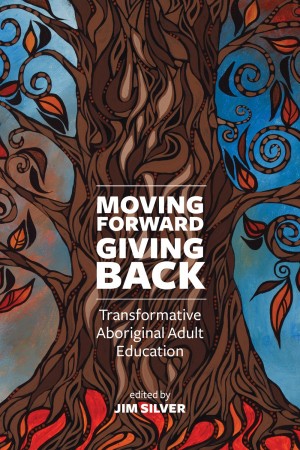
Moving Forward, Giving Back: Transformational Aboriginal Adult Education edited by Jim Silver
Aboriginal people who choose to improve their education as adults often face many challenges, most of which arise from the ongoing impact of colonialism and of racialized poverty. Yet in Winnipeg’s low-income inner city, a variety of innovative and effective Aboriginal adult education initiatives have emerged. Drawing upon the voices and experiences of Aboriginal adult learners themselves, this book describes the initiatives and strategies that have proven successful and transformative for adult Aboriginal students.
These programs also positively influence the lives of the students’ families and are even felt on the community level, functioning as anti-poverty initiatives. Moving Forward, Giving Back posits that effective Aboriginal adult education initiatives need to be dramatically expanded to improve the health and vibrancy of Aboriginal people and communities across Canada.
Purchase at Fernwood Publishing
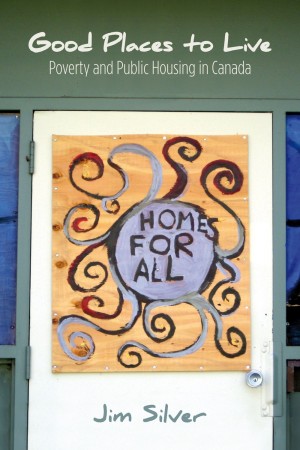
Good Places to Live: Poverty and Public Housing in Canada by Jim Silver
Public housing projects are stigmatized and stereotyped as bad places to live, as havens of poverty, illegal activity and violence. In many cities they are being bulldozed, ostensibly for these reasons but also because the land on which they are located has become so valuable. In Good Places to Live, Jim Silver argues that the problems with which it is so often associated are not inherent to public housing but are the result of structural inequalities and neoliberal government policies. This book urges readers to reconsider the fate of public housing, arguing that urban poverty — what Silver calls spatially concentrated racialized poverty — is not solved by razing public housing. On the contrary, public housing projects rebuilt from within, based on communities’ strengths and supported by meaningful public investment could create vibrant and healthy neighbourhoods while maintaining much-needed low-income housing. Considering four public housing projects, in Vancouver, Toronto, Halifax and Winnipeg, Silver contends that public housing projects can be good places to live — if the political will exists.
Purchase at Fernwood Publishing
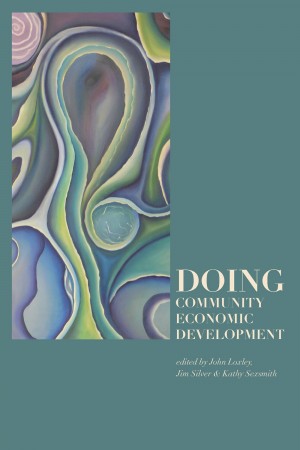
Doing Community Economic Development by John Loxley, Kathleen Sexsmith and Jim Silver
Challenging traditional notions of development, these essays critically examine bottom-up, community economic development strategies in a wide variety of contexts: as a means of improving lives in northern, rural and inner-city settings; shaped and driven by women and by Aboriginal people; aimed at employment creation for the most marginalized. most authors have employed a participatory research methodology. The essays are the product of a broader, three-year community-university research collaboration with a focus on the strengths and difficulties of participatory, capacity-building strategies for those marginalized by the competitive, profit-seeking forces of capitalism. no easy answers are offered, but many exciting initiatives with great potential are described and critically evaluated.
Purchase at Fernwood Publishing

Transforming or Reforming Capitalism: Towards a Theory of Community Economic Development edited by John Loxley
Growing worldwide interest in community economic development has led to a blossoming of “how to” manuals,as well as analyses of co-operatives, development corporations, gender, financing, etc. Yet in all this discussion very little is said about the basic objective of CED: Is it designed to fill holes left by capitalism or is it intended to replace it? There is equally little on a theory of CED. This book draws on several disciplines—particularly economics, sociology and political studies—to assess the state of CED theory and to identify implicit issues for building that theory. It emphasizes the necessity to draw theoretical insights from each discipline, in the process howing the efficacy of interdisciplinary approaches. It concludes with a discussion of both future theoretical directions and of what existing theory has to say about achieving a transformative CED.
Purchase at Fernwood Publishing
